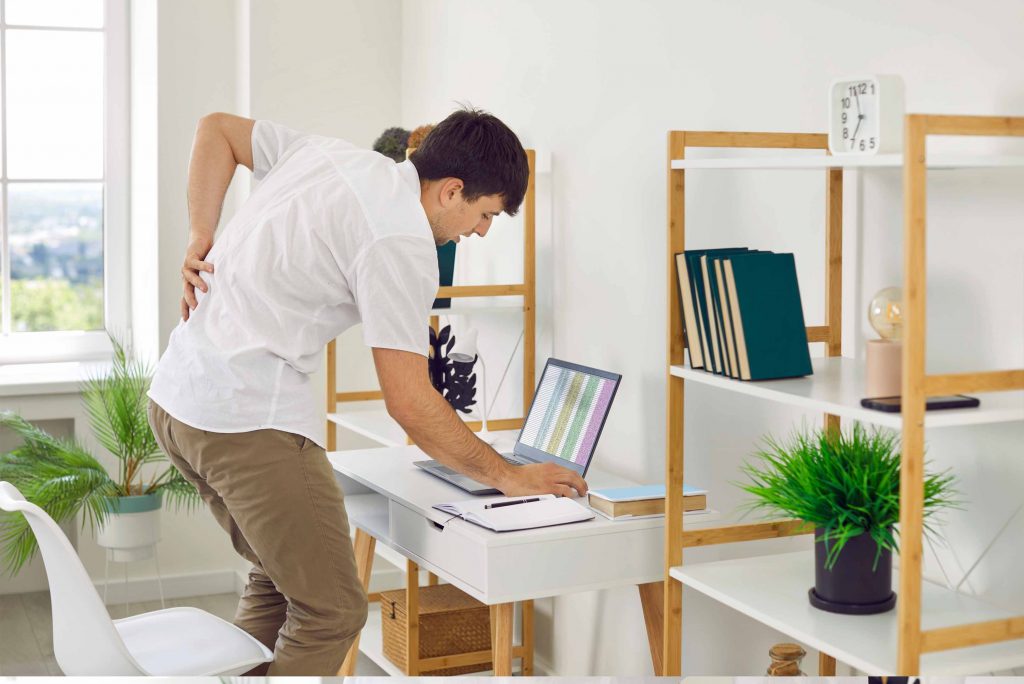Introduction
Dealing with lumbar spondylosis pain while working can be challenging. Whether you’re sitting at a desk all day or engaged in physical labor, finding ways to alleviate discomfort and stay productive is essential. In this blog post, we’ll explore practical tips and strategies to help you manage lumbar spondylosis pain while working, allowing you to focus on your job without letting pain hold you back.

Understanding Lumbar Spondylosis
Lumbar spondylosis, also known as spinal osteoarthritis, is a condition characterized by the degeneration of the discs and facet joints in the lumbar spine. This degeneration can lead to pain, stiffness, and decreased mobility, making it challenging to perform daily activities, including work.
Tips for Managing Lumbar Spondylosis Pain While Working
1. Ergonomic Workspace Setup
- Ensure your desk, chair, and computer are ergonomically designed to support good posture and reduce strain on your spine.
- Use a chair with proper lumbar support and adjust the height of your workstation to maintain neutral spine alignment.
2. Take Regular Breaks
- Incorporate short breaks into your workday to stretch and move around.
- Set reminders to stand up, walk around, and perform gentle stretches to relieve tension in your back muscles.
3. Practice Good Posture
- Sit up straight with your shoulders back and your feet flat on the floor.
- Avoid slouching or hunching over your desk, as this can exacerbate lumbar spondylosis pain.
4. Use Proper Lifting Techniques
- When lifting objects, bend your knees and keep your back straight to avoid putting excessive strain on your lumbar spine.
- Use mechanical aids or ask for assistance when lifting heavy items to prevent injury.
5. Incorporate Low-Impact Exercise
- Engage in regular low-impact exercises such as walking, swimming, or cycling to strengthen the muscles supporting your spine.
- Avoid high-impact activities that may exacerbate lumbar spondylosis symptoms.
6. Apply Heat or Cold Therapy
- Use heat packs or warm compresses to relax tight muscles and alleviate pain.
- Alternatively, apply ice packs to reduce inflammation and numb the area affected by spondylosis pain.
7. Consider Using Assistive Devices
- Use lumbar cushions or supportive pillows to maintain proper spinal alignment while sitting.
- Invest in a standing desk or adjustable workstation to alternate between sitting and standing throughout the day.
Conclusion
Managing lumbar spondylosis pain while working requires a combination of ergonomic adjustments, lifestyle modifications, and self-care strategies. By implementing these tips and techniques into your daily routine, you can minimize discomfort, improve your productivity, and maintain a fulfilling work life despite your condition.
Remember to listen to your body and seek medical advice if you experience persistent or worsening symptoms. With the right approach, you can effectively manage lumbar spondylosis pain and enjoy a better quality of life at work and beyond.